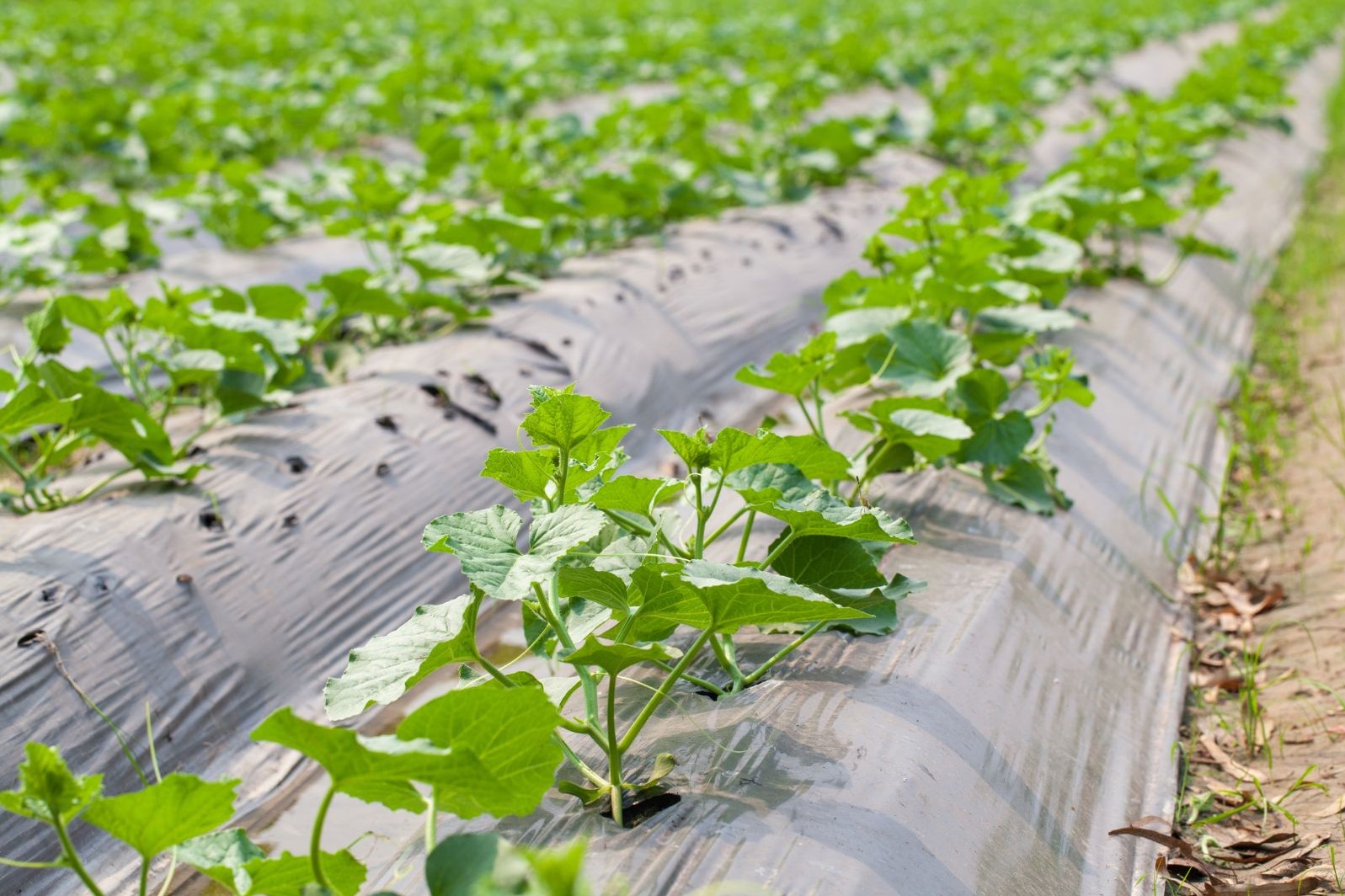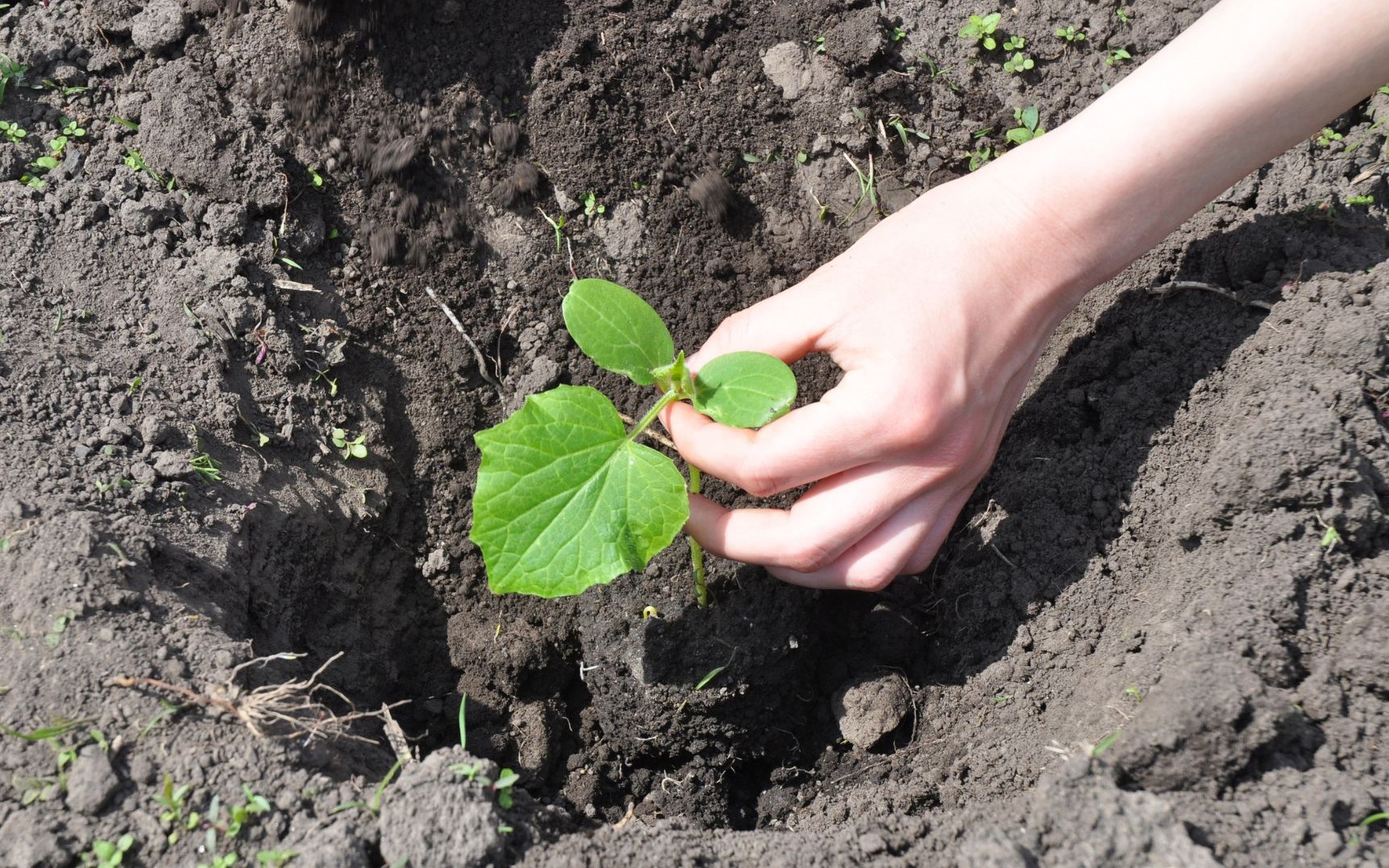Cucumber Soil preparation, Soil, and Climate requirements, and Seeding requirements

This post is also available in:
This post is also available in:
![]() Español (Spanish)
Español (Spanish) ![]() Français (French)
Français (French) ![]() Deutsch (German)
Deutsch (German) ![]() हिन्दी (Hindi)
हिन्दी (Hindi) ![]() Ελληνικά (Greek)
Ελληνικά (Greek)
After testing and selecting the cucumber variety (or varieties), growers must prepare their fields for sowing the crop.
Soil and Climate Requirements for cucumber plants
Cucumbers generally prefer relatively warm weather (after all, it is a summer vine), with temperatures between 75 to 85 °F (24-30 °C). The plants are quite sensitive to frost and low temperatures. The minimum lethal temperature is 32-39 ºF (0-4 ºC), depending on its duration. On the other hand, high temperatures are also undesirable since they may cause light green fruit color and bitterness in many cucumber varieties (7). Cucumbers cannot stand strong winds, while they thrive in climates with high relevant humidity levels (8). The plants need full sun exposure (minimum 4-6 hours daily) to thrive but can also grow in warm areas and about 30-50% shade.
Cucumbers thrive in a wide variety of soil types. However, as ideal, we consider deep, fertile, well-drained, loose, rich in organic matter, and with a pH of 6.0- 7.5 soils. Poor plant growth and reduced yield can occur in acidic soils (pH below six) (2). Also, cucumbers prefer clay or loamy soils, while soils with a high salt content are unsuitable (8). Many farmers choose to add straw mulch to maintain good soil moisture and temperature and prevent contact with the fruits with the soil. When it is possible to select where the crop will be planted, farmers are advised to avoid areas with a known history of diseases or heavily infested with weeds.
Soil preparation for planting cucumbers
Soil preparation is important when growing any crop since it can affect seed germination, plant emergence, growth rhythm, maturity, and final yields. Cucumber is no exception.
Growers can apply tillage, including plowing, disking, and harrowing. Since cucumbers prefer loose soils, it is essential to manipulate the top 2.5-5 cm (1-2 inches) of soil and remove any weeds offering a clean start to our plants. Some farmers also apply the “false sowing” strategy by irrigating the field to encourage the growth of weed seeds and then eliminating them with tillage 1-2 weeks later before sowing the crop.
Instead of tilling the entire field, the farmer could strip-till. This tillage technique is when a cool-season cover crop strip is left between every two to four rows of cucumber. This way, there is better wind circulation while harvesting and spraying become easier. Cucumbers are often grown on flat soils with no slope. Under normal conditions, there is no advantage in creating slopes on well-drained sandy soils. However, when the soil is not that loose or if wet weather is anticipated, bedding into free-standing raised beds can be beneficial.
One thing that we have to remember is that conventional tillage contributes to the loss of organic matter. To avoid this problem, a grower could increase organic matter by using winter cover crops. For example, winter clovers can be combined with cereal grass in the cover crop mix. This way, not only soil organic matter will increase, but also there will be an increase in the available nitrogen for cucumber. Especially in organic farming, legume cover crops will provide nitrogen for an extended period.

Cucumber Planting Time, Seeding Requirements, and Plant Spacing
Sowing time depends mainly on the field location and if the grower decides to sow the crop directly to an open field or use transplants. It is recommended to sow in the frost-free warmer months in temperate and arid areas. In the tropics, you can sow virtually year-round. The sowing date highly depends on the cultivation type (outdoors or greenhouse). However, it is recommended to plant cucumbers in the spring after the last frost. Seeding time for most areas of the northern hemisphere is from mid-February to late April, while in areas like interior and desert valleys (e.g., in California), cucumbers can be planted from February until July. More specifically, if you grow cucumbers in a heated greenhouse, you can sow cucumber seeds from mid-February to mid-March.
In some cases, cucumber is planted in raised beds (120 cm width at an interval of 30 cm). To help the plants during their first growth stages, farmers can apply and incorporate to the soil well-rotted manure or compost (1 lb per square foot or 4-5 kg per square meter) 1-2 months before sowing. Some granular phosphorus fertilizers can also be applied.
Cucumber Plant Spacing and Plant Population
Cucumber growers can choose to start their crop either by sowing the seeds directly to an open field or by transplanting seedlings. Due to the lower costs and the acceptable results, most cucumber growers (especially on larger scales) prefer direct sowing. The cucumber seeding requirement is 1-2.5 kg of seeds per hectare (0.9-2.2 lb per acre). Farmers can use treated seeds or apply the treatment themselves using Trichoderma viride or Pseudomonas fluorescens, or Carbendazim. In the case of transplants, young cucumber plants with 4-6 true leaves can be used (after hardening).
Cucumber is usually planted in having 60 cm (24 inches) distance between the plants and 120-180 cm (48-72 in) between the rows. In general, cucumbers for pickling are planted closer together. Seeding depth has to be 1.3-2 cm (½ to ¾ inches). When the temperature is around 18-30 °C (65-85 °F), seeds need 5-10 days to germinate.
The transplants should be buried close to the first true leaf. As a vining plant, cucumbers will spread out quickly and cover the ground around them. Trellising your plants can help you save space, and it will probably improve final yields. Irrigating seedbeds after seeding will promote germination.
References
- https://www.sgaonline.org.au/cucumbers/
- https://agritech.tnau.ac.in/horticulture/horti_vegetables_cucumber.html
- https://ipm.ucanr.edu/home-and-landscape/cucumber/cultural-tips/index.html?src=307-pageViewHLS
- https://extension.okstate.edu/fact-sheets/cucumber-production.html
- https://www.wifss.ucdavis.edu/wp-content/uploads/2016/10/Cucumbers_PDF.pdf
- https://www.rhs.org.uk/vegetables/cucumbers/grow-your-own
- https://gardeningsolutions.ifas.ufl.edu/plants/edibles/vegetables/cucumbers.html
- https://www.bunnings.com.au/diy-advice/garden/planting-and-growing/how-to-grow-and-care-for-cucumbers
- https://extension.uga.edu/
- https://www.aua.gr/
- https://ag.umass.edu/sites/ag.umass.edu/files/fact-sheets/pdf/cucumbers.pdf
Further reading
Cucumber History, Plant Information, Interesting facts, and Nutritional Value
How to grow cucumber for profit – Commercial cucumber cultivation
Principles for selecting the best Cucumber Variety
Cucumber Soil preparation, Soil, and Climate requirements, and Seeding requirements
Cucumber Irrigation – Water Requirements and Methods
Cucumber Fertilization Requirements and Methods








































































